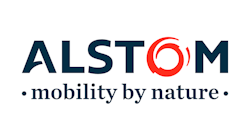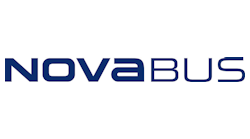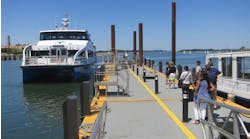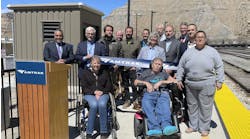CAT Introduces First Articulated Bus Into Service in S.C.
Clemson Area Transit (CAT) has put the first articulated bus in service in South Carolina.
“We double the capacity and only use one bus to accomplish as much transportation,” Al Babinicz, general manager of CAT said. “The ‘bendy bus’ technology eventually could help solve transportation problems throughout South Carolina.”
CAT dubbed its Nova LFS Artic the “bendy bus” because of its center articulation that allows the bus to corner tightly and handle city streets as easily as a regular bus. Similar LFS Artic buses are currently in operation in large urban centers.
CAT plans to use its LFS Artic primarily on the Red Route to transport Clemson University students, faculty and staff to and from campus. As part of its plan for older buses, CAT expects to retire a total of eight buses, of which several will be replaced by articulated buses.
CAT already owns five 40-ft Nova LFS Smart Buses, purchased in 2012.
Alstom to Provide Light Rail Vehicles in Ottawa
Alstom finalized a contract to provide 34 light rail vehicles and 30 years of maintenance services to the Rideau Transit Group (RTG) consortium that was selected to design, build, finance, and maintain the first line of the Ottawa Light Rapid Transit (OLRT) system worth over €1.5 billion.
The new Citadis Spirit that Alstom is designed in a high capacity version and will be able to operate in extreme winter conditions. It will have a top speed of 65 mph.
Ottawa’s 12.5 kilometer light rapid transit system will provide service to the downtown area via 13 stations and a 2.5 kilometer tunnel. Construction of the project will start in the next few months and the system is expected to enter full service in spring of 2018.
“The Alstom Citadis Spirit light rail vehicle is very flexible and can be adapted to the needs of other cities across North America.” said Guillaume Mehlman, Alstom Transport North American president.
Sun Tran Puts Alternatively Fueled Buses In Service
In an effort to strengthen the agency’s commitment to protecting the environment, Sun Tran has placed 47 new alternatively fueled buses into service.
Ten utilize hybrid electric technology and the remaining 37 run on B5 biodiesel, a clean burning alternative fuel. These new buses replace almost 19 percent of the fleet and will be used throughout the system on regular fixed routes.
“This investment demonstrates Sun Tran’s strong commitment to our community’s sustainability,” said Kate Riley, Sun Tran general manager. “With one in five buses replaced, passengers enjoy new, more reliable, environmentally friendly buses [and] it gives people another reason to try Sun Tran and help reduce our carbon footprint.”
Sun Tran’s buses with hybrid electric technology produce lower hydrocarbon and carbon monoxide emissions, which lowers particulate emissions by up to 90 percent, nitrogen oxide emissions by up to 50 percent and greenhouse gas emissions by more than 25 percent.
Authors on High-Speed Rail Hold Discussion in D.C.
Author and Director of Public Outreach for the U.S. High-Speed Rail Association (USHSR) Emy Louie and her co-author Nancy Bolts discussed their new book “Fast Trains: America’s High Speed Future,” to coincide with the high-speed rail association’s conference in Washington, D.C.
“The book tells intriguing narratives from the point of view of the authors as well as characters,” said co-author Nancy Bolts. “It makes an emotional connection with the public and arouses the imagination of an America with modern high-speed rail moving transportation into the 21st Century,” said co-author Bolts.
Fast Trains was inspired in part by the surge of popularity, interest and ridership in rail travel as Americans overwhelmingly support advancements and investment in public transportation.
This book seeks to stimulate public interest in high-speed rail by focusing on the vast economic, environmental and lifestyle benefits of having a world-class high-speed rail system throughout America. Fast Trains foretells a bright future for high-speed rail through the use of vignettes that compare trips by automobile or airplane in the U.S. with high-speed rail trips elsewhere.
Phoenix to Purchase CNG Fueled Buses
Phoenix City Council gave for the Phoenix Public Transit Department to buy buses that use compressed natural gas.
The move marks a big change for Phoenix, which currently has the largest liquid natural gas bus fleet in the U.S. and is expected to net a $4 million savings for the city.
“Compressed natural gas has become the public transit industry’s standard for natural gas powered vehicles,” department director Neal Young said.
CNG buses are cheaper because of the vehicle’s manufacturing process and the dense fuel can be delivered via pipeline to bus fueling sites.
The 120 new CNG buses will replace the same number of retiring LNG buses and will be procured for $61 million from a regional cooperative purchasing agreement with the Regional Public Transportation Authority. The new buses will arrive between the fall of 2013 and spring of 2014.
After delivery, Phoenix’s 465 Valley Metro buses will be 65 percent natural gas and 35 percent ultra-low sulfur diesel both which are considered clean-burning fuels.
Valley Metro Releases New Animated Short
Valley Metro released the next Notes music video titled “ValleyMetro.org” by local band Black Carl. While the song demonstrates the ease of using Valley Metro’s website, the video features a humorous fairytale setting that will charm audiences of all ages..
This is the 10th song to be released in the Notes series and Valley Metro celebrated by giving a little something back to its riders during a social media customer appreciation event. Five Facebook followers won goodie bags with earbuds and crown-shaped phone plugs.
“We want to connect with passengers in a way that shows transit can be fun and approachable,” said Hillary Foose, Valley Metro director, communication and marketing. “While the video is amusing and whimsical, the song is a reminder of how to use our online tools, including our recently upgraded mobile site.”






